SatCom
On-The-Move
USE CASE

TO VICTORY IN OZ
How Satellite Connectivity Helped the Belgian
Solar Team
to Victory in Oz


THE RACE




Every two years, purpose built solar powered race cars start out in Darwin in the north of Australia, and wind their way across 3,021 kilometers of Australian outback, down to Adelaide in the south of the country.
University teams from across the globe engage in this demanding 3021-kilometer race through the Australian outback, relying solely on the power of the sun to propel them forward.
In a remarkable achievement, the Belgian Solar team secured victory for the second time in a row, showcasing unparalleled prowess in harnessing solar energy and conquering the challenges of this prestigious competition.
The Belgian Solar team won with a time of 34 hours, 4 mins and 41 secs. Compared to their previous win, they improved their race time by 48 minutes.
THE CAR

The aerodynamic, bullet-shaped race car, Infinite, was designed and built, from scratch, by 20 engineering students who each took a year out from their studies, to work on the project full time.
The car features a cutting-edge battery pack enabling it to travel an incredible 900 kilometers without needing solar energy, and an ultra-efficient motor with a peak efficiency of 98.3%, 40% higher than a traditional combustion engine.
For the first time, the car also featured an innovative fin on the car’s cockpit, which can be deployed in crosswinds, to enable the car to sail with the wind and use up to four times less energy. Impressive stuff!
THE SUPPORT TEAM

A FULL CONVOY
The Innoptus Solar Team’s Infinite race car was supported by a team of over nine other vehicles throughout the race. Communication between the convoy cars was KEY.
The core convoy included the solar car and its lead and rear escort vehicles.
An ‘Eagle’ car traveled an hour in front to ‘scout’ the route for hazards such as potholes, roadworks, animals in the road, and even bushfires!
A ‘Brains’ car traveled behind the solar car and was responsible for analyzing external data, as well as data from the solar car and other cars in the team, to decide the race strategy.
This is the car where the satellite technology solution provided by Intelsat, Kymeta, and ST Engineering iDirect was installed.
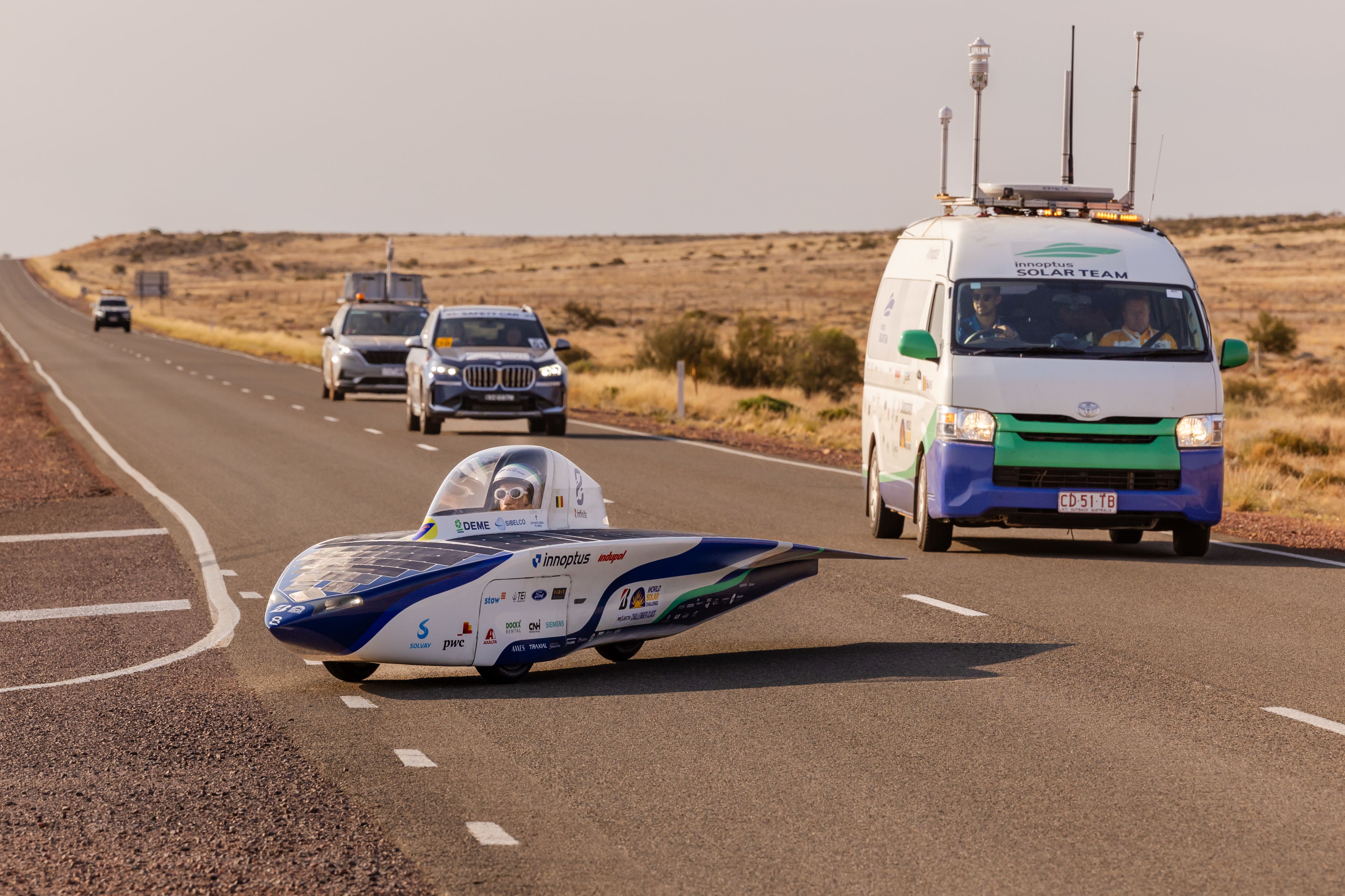
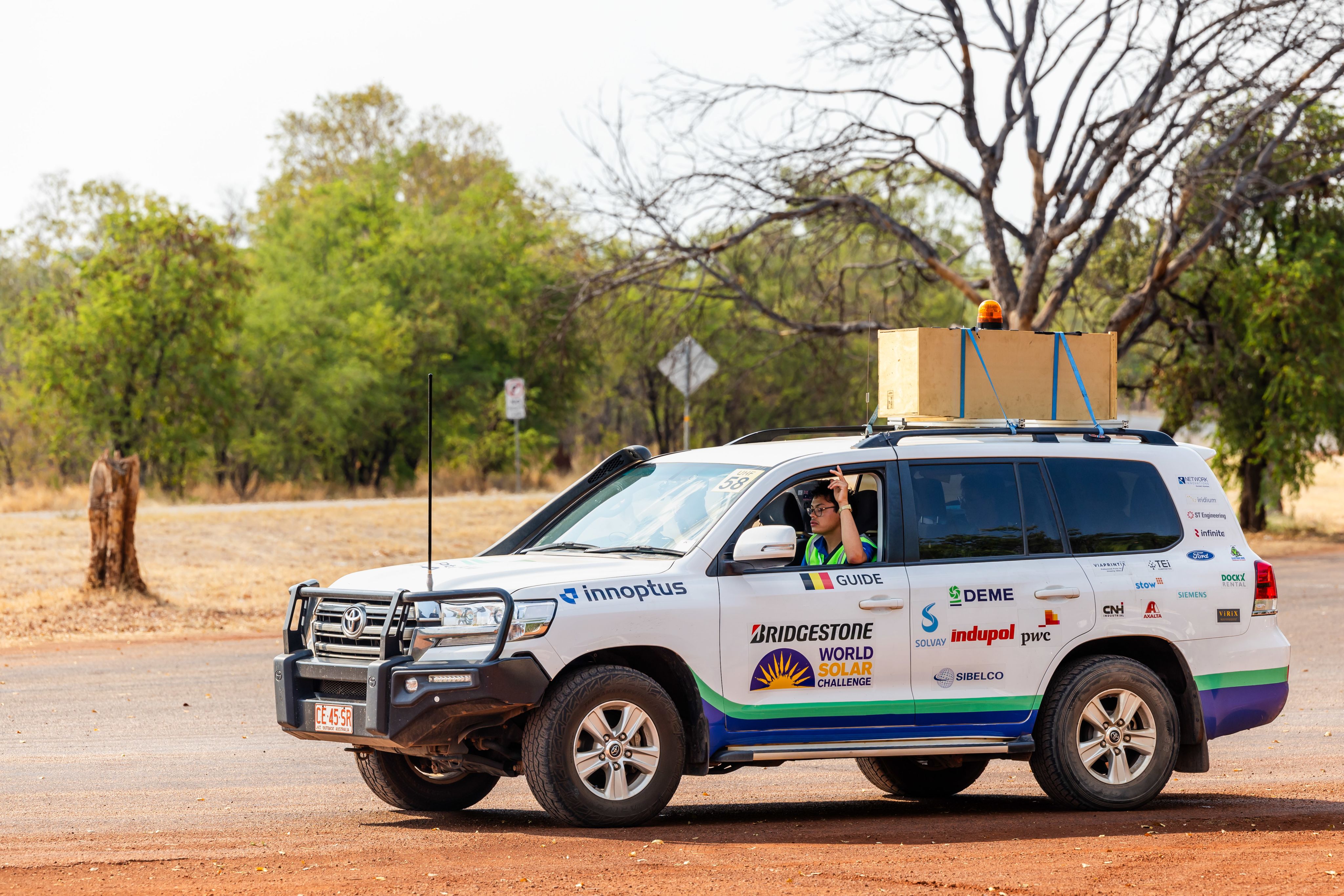
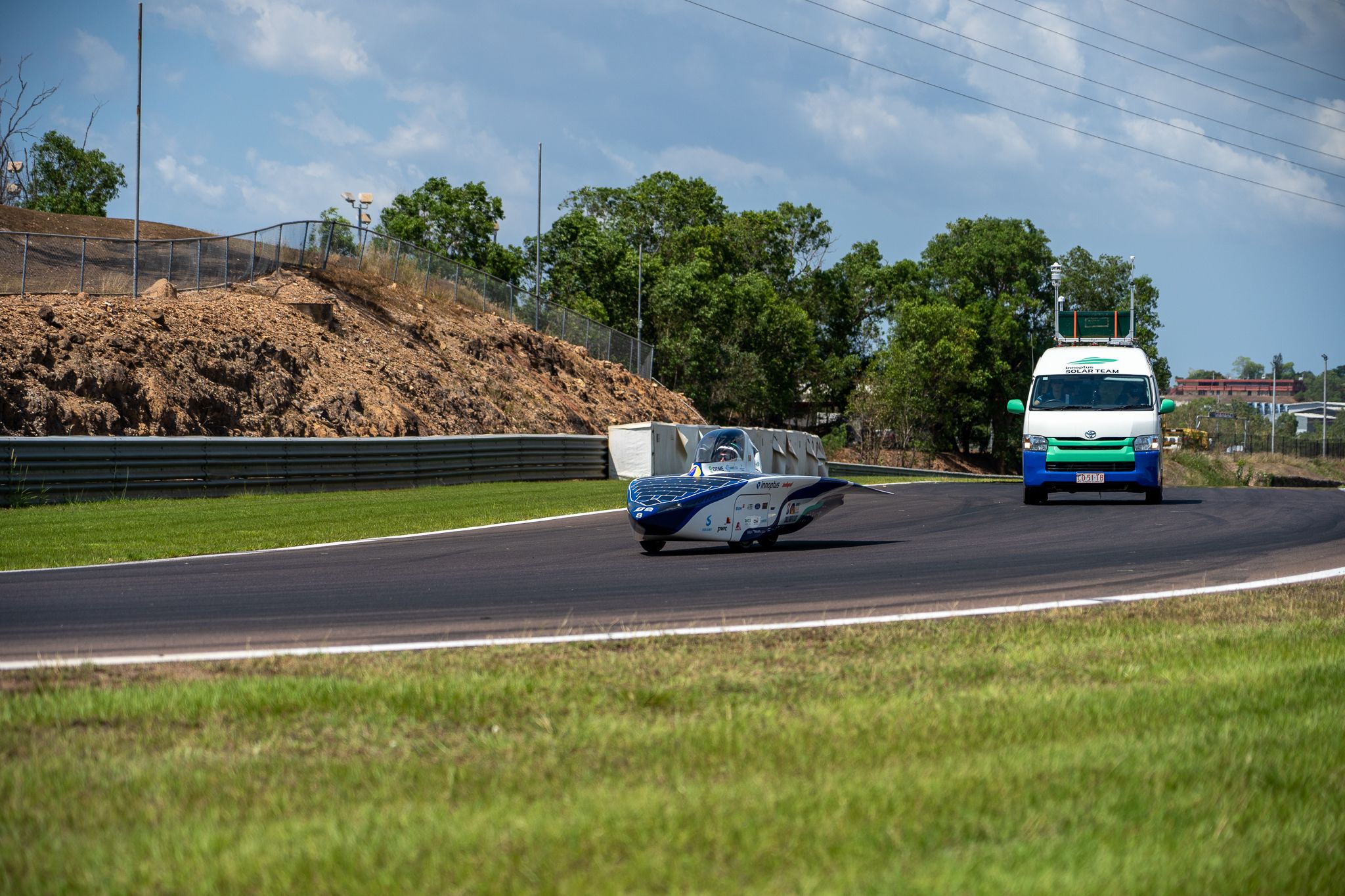
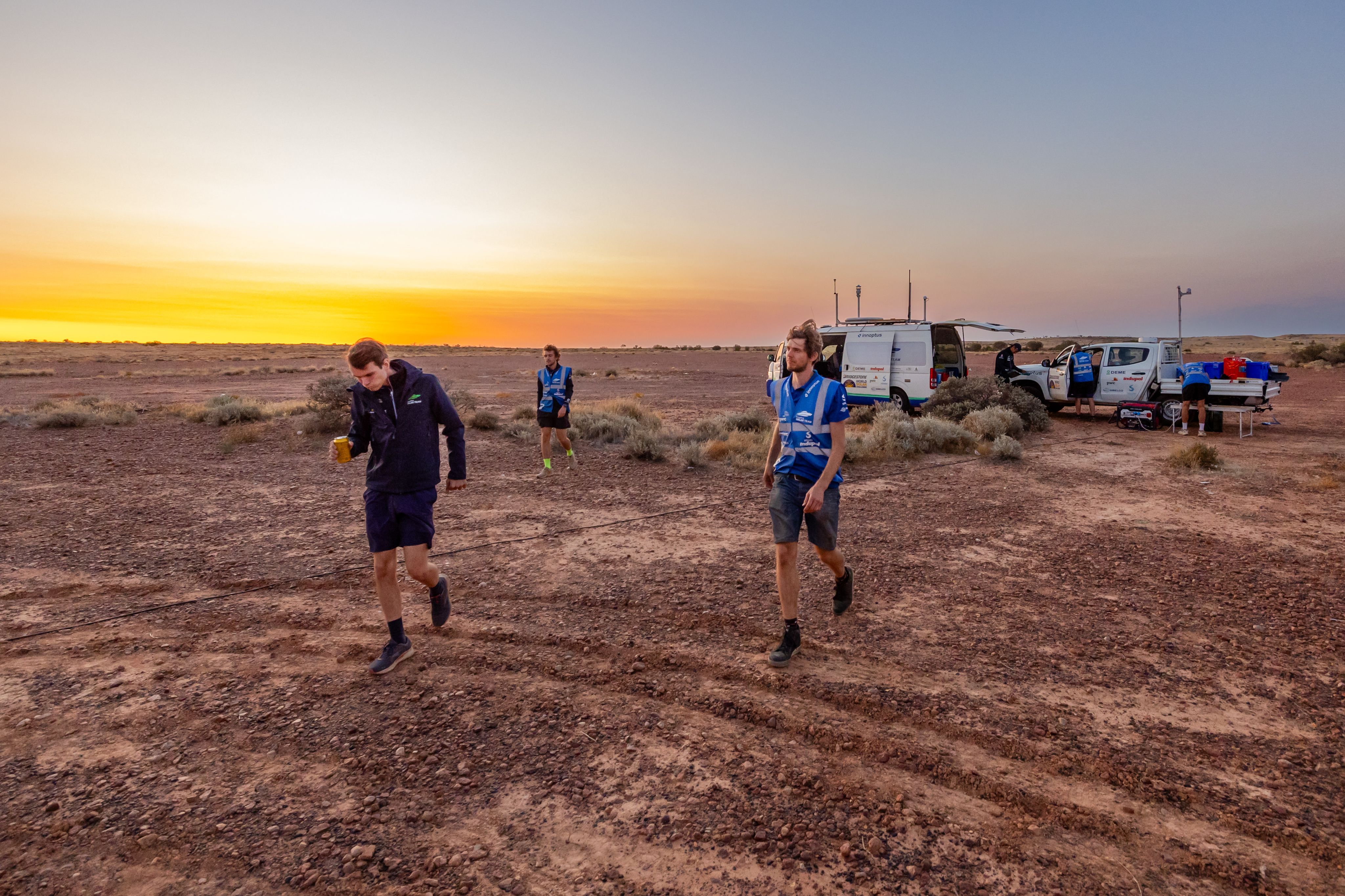
TECHNOLOGY
CONNECTIVITY
PARTNERS


Intelsat powered the space segment element of the team’s satcom connectivity with its Intelsat FlexMove solution designed to power data-intense applications.

The team used the KymetaTM Hawk u8 antenna to connect to satellites. The Kymeta Hawk u8 antenna is a flat panel antenna designed for mobile applications. It’s a complete connectivity solution ready to provide on-the-go communication.
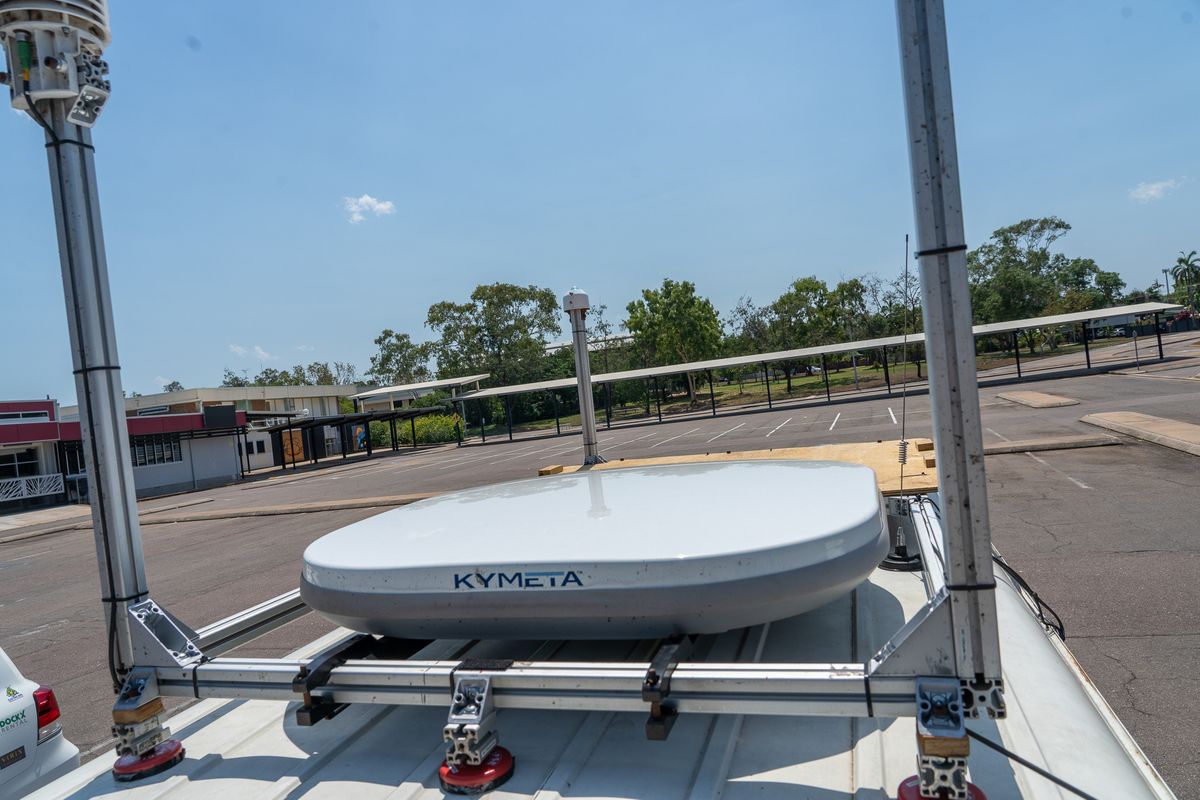
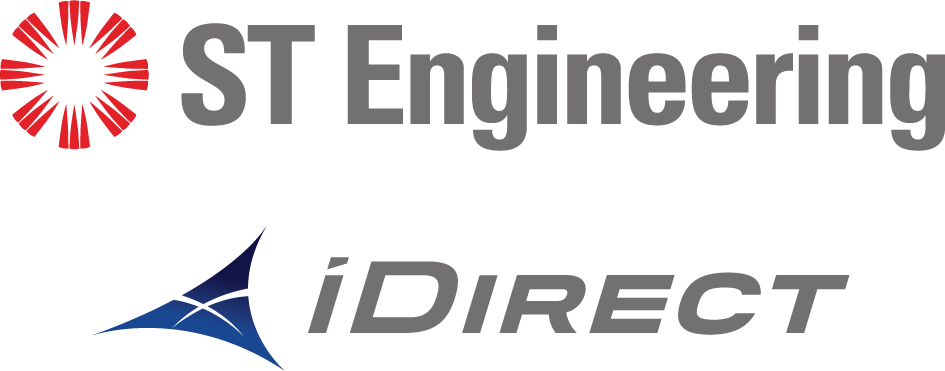
ST Engineering’s iDirect modem technology is integrated into the Kymeta Hawk u8 and it features advanced mobility capabilities.

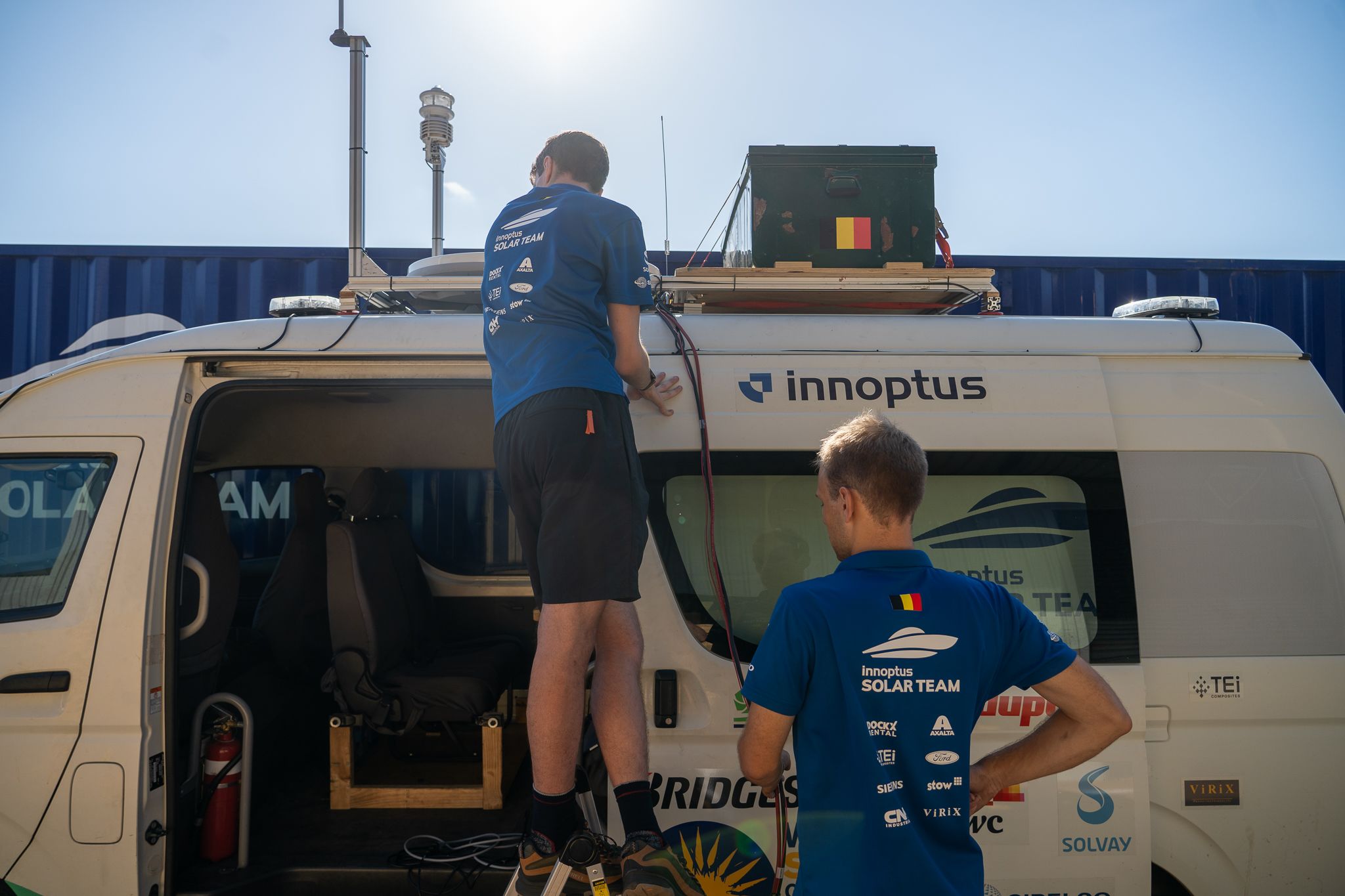
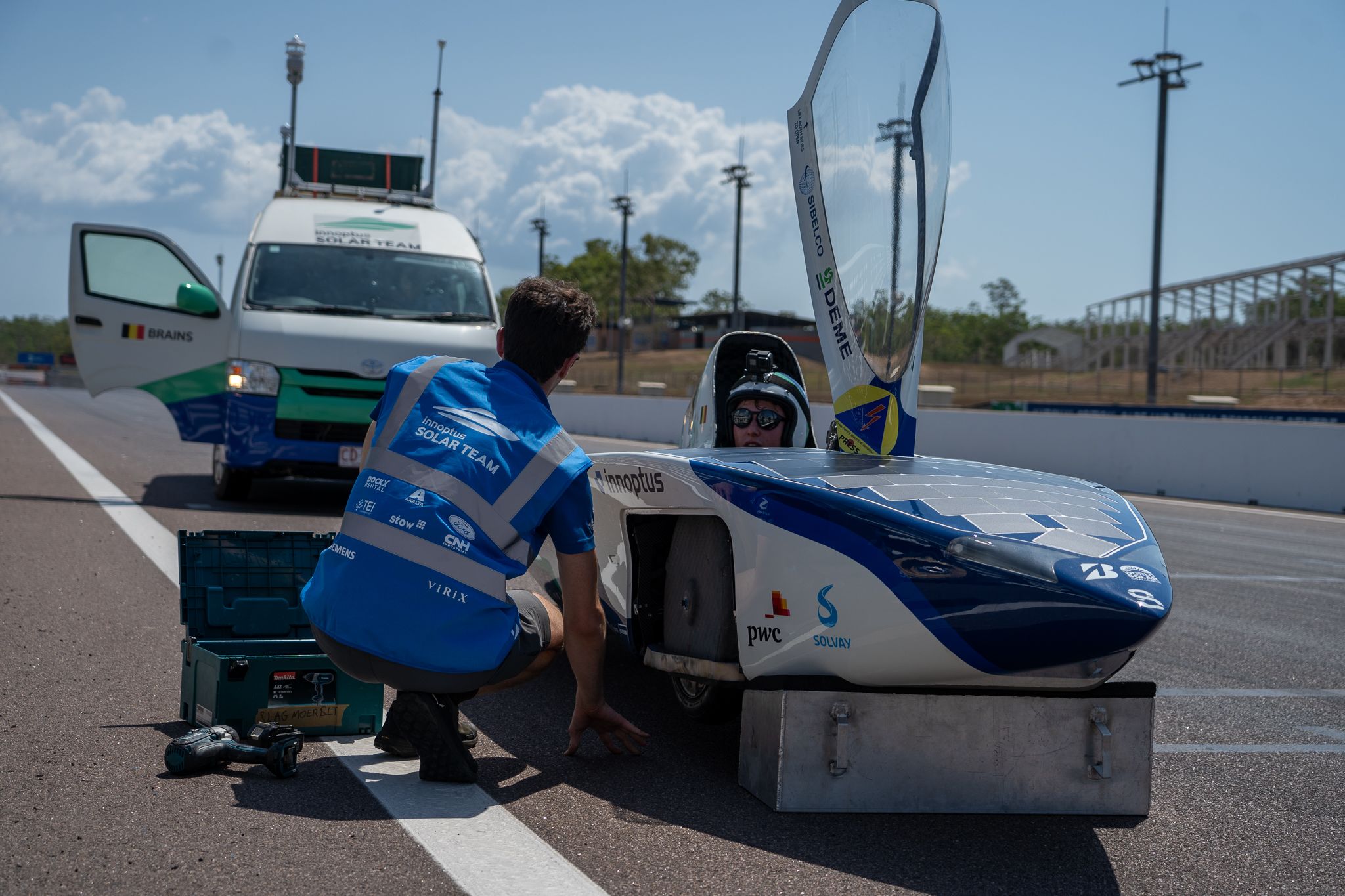
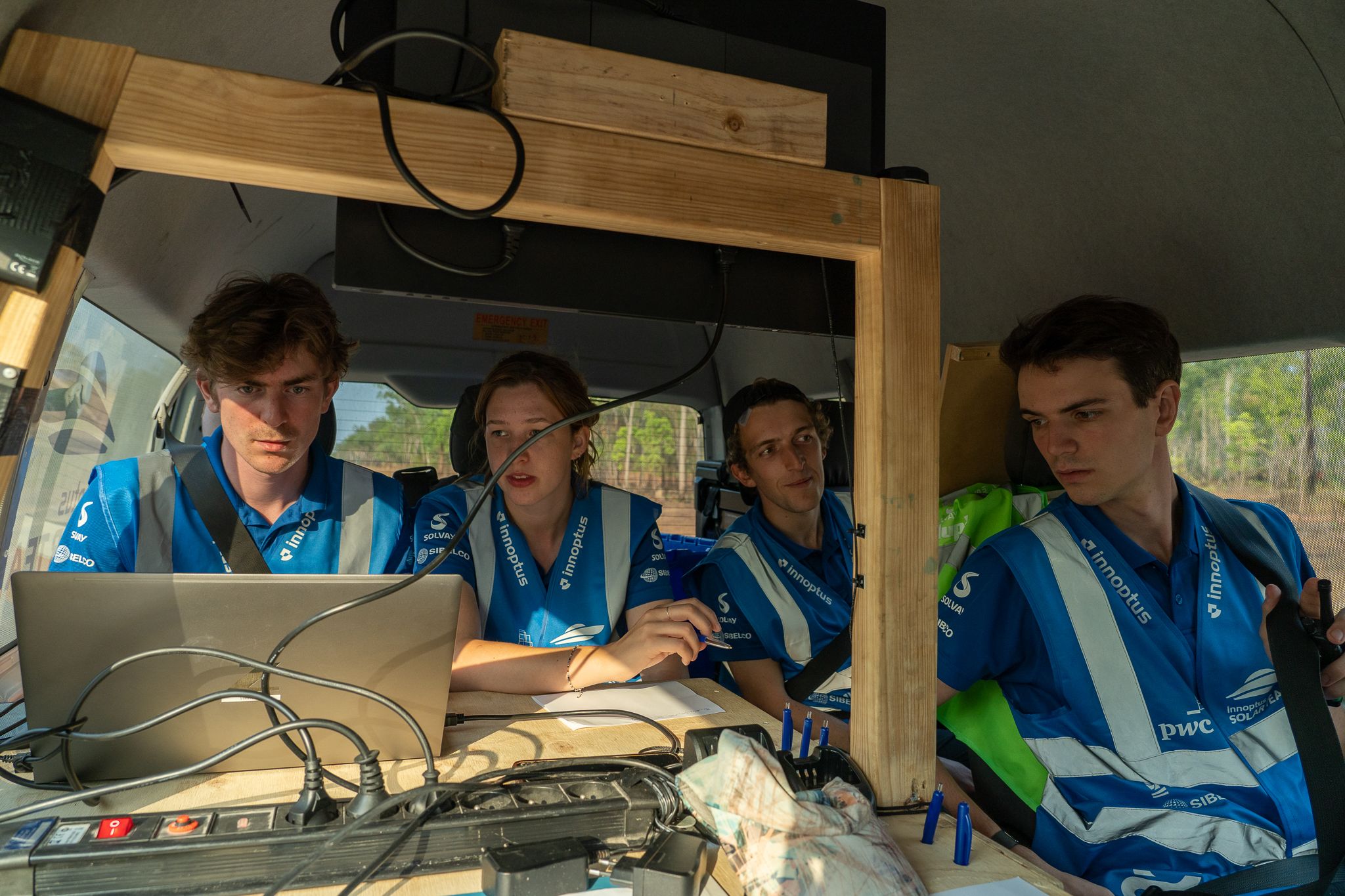
CONNECTIVITY
USE
THROUGHOUT
THE DAY

RACE STRATEGY CONNECTIVITY
Having continuous connectivity was a critical factor in helping the Innoptus solar team maintain the lead. Being able to access comprehensive weather data and accurate weather predictions was a key element of the team’s winning strategy. Every morning and evening, the Belgian Royal Meteorological Institute sent a huge data file covering the entire route, in sections, and broken down by the hour. This data allowed the team to work out its strategy for each section of the race.
The Brains car continuously also sent data back to Belgium for overnight analysis. On average 240.000 data points were sent every 10 minutes by different monitoring programs using satcom-on-the-move connectivity.
PR AND SOCIAL MEDIA CONNECTIVITY
Connectivity on the move was also used to send video and images to the PR car for sharing on social media during the race.
GoPro cameras were also mounted on the Brains car and some of the other cars in the convoy. In the evening, the footage was collected and used to make a recap of the entire day so it could be pushed out to social media and other media outlets.
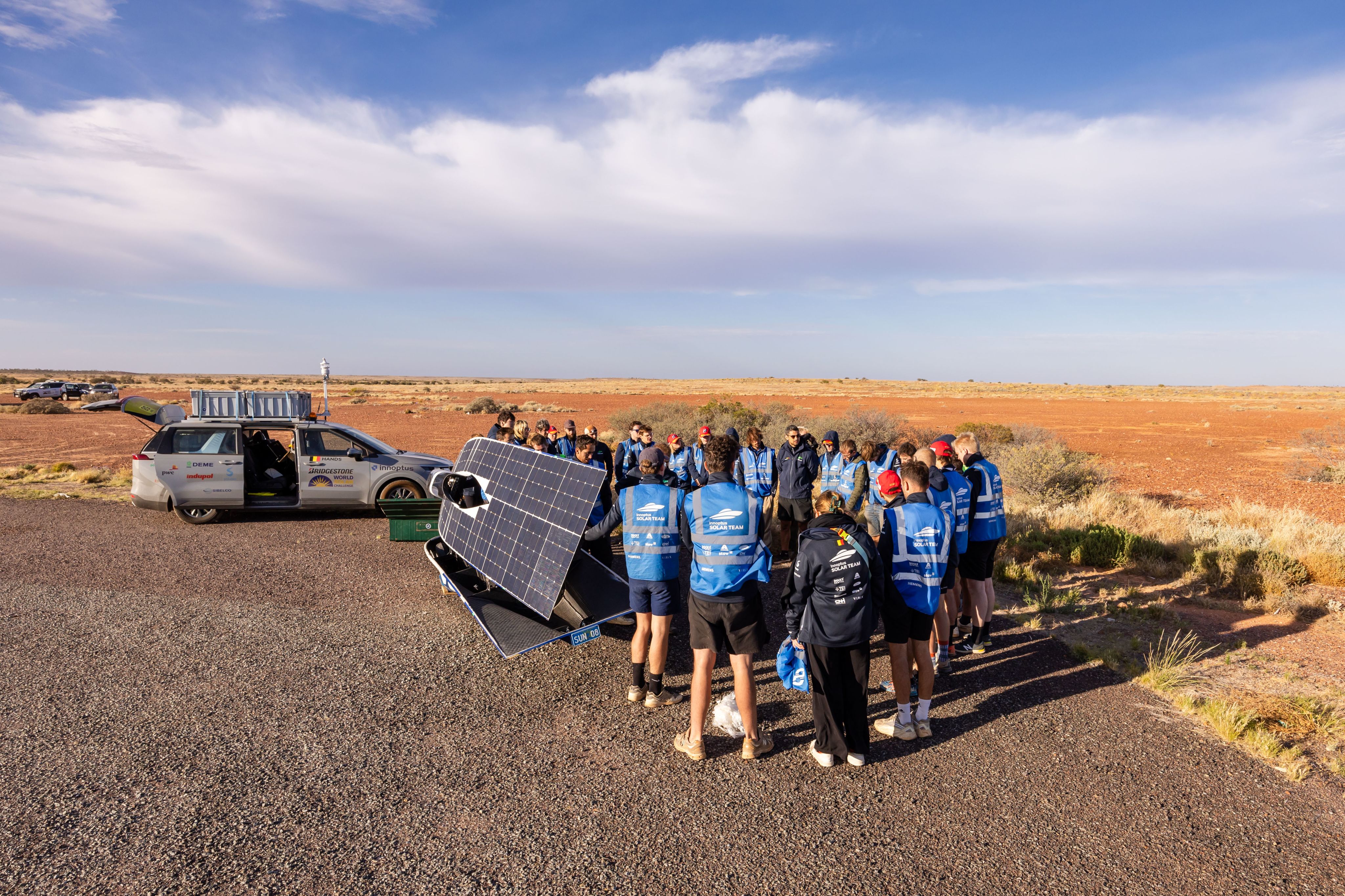
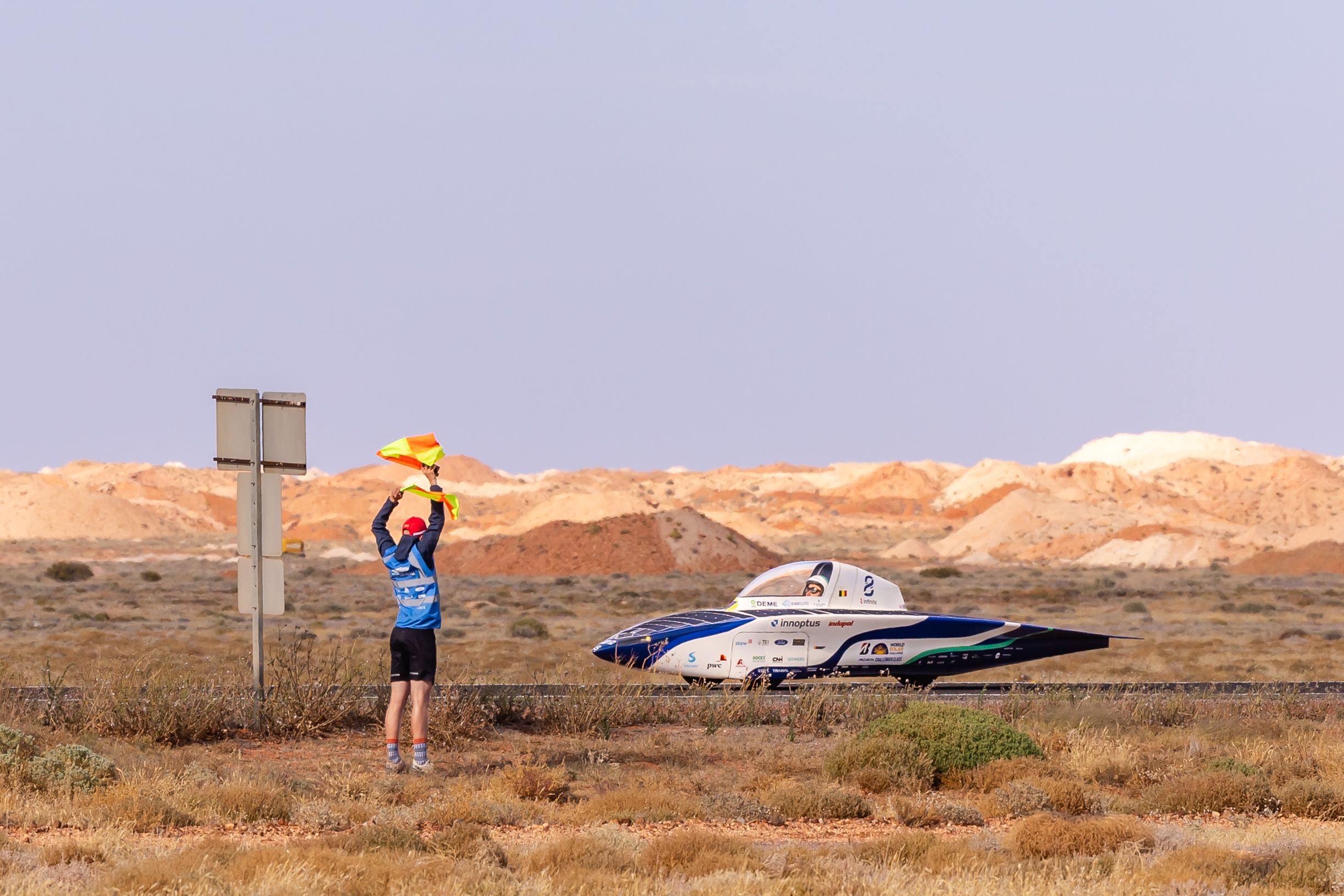
CONNECTIVITY FOR CONTROL STOP STRATEGY
Connectivity was also critical in helping the team decide on the right strategy and timing for the control stops which happen every few hundred kilometers and last thirty minutes.
The team always tried to time these stops with the right moment to get the maximum benefit from the sun’s energy tilting the solar panel towards the sun.
Simon De Baere, Race Strategist Engineer added: “We used live satellite imagery to change our race strategy throughout the day.”
CONTROL STOP EXAMPLE
On the third day of the race, there was a large cloud with a small gap in middle. Satellite imagery allowed the Brains car to predict exactly when the gap in the cloud would be in the right position at the planned controlled stop so that the race car was able to get maximum incoming energy.
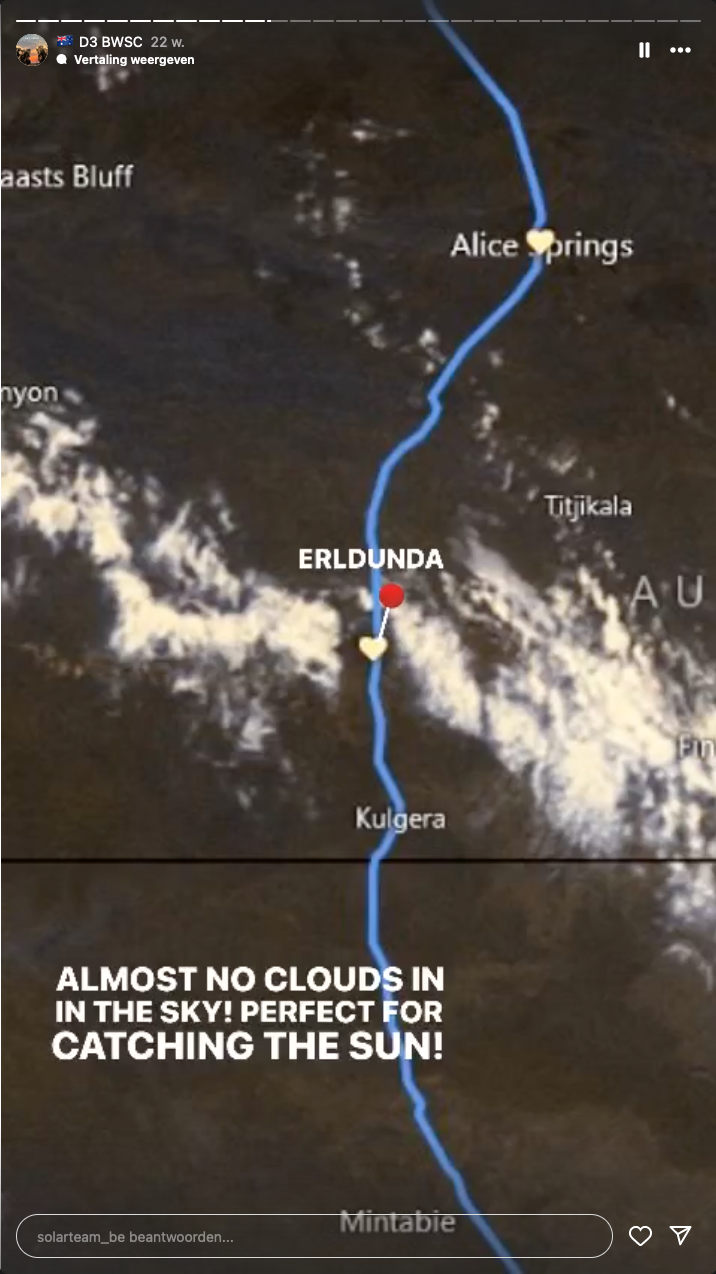
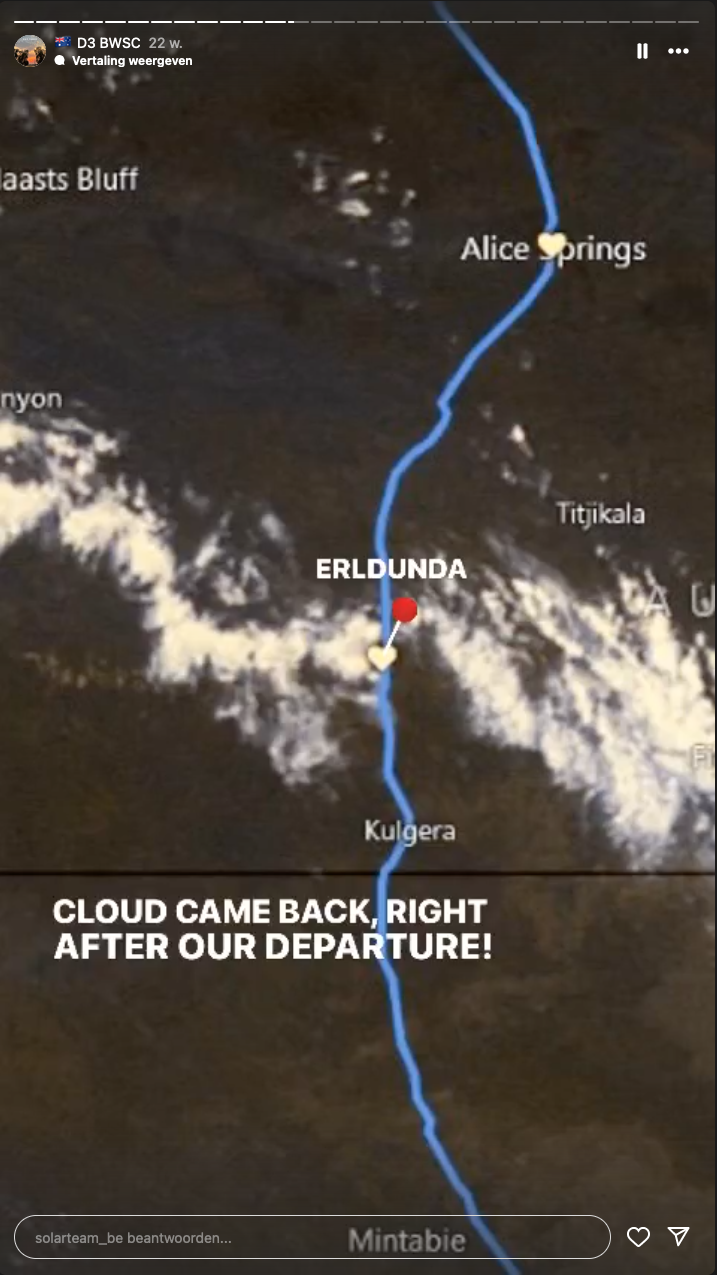
Graph below shows the team's excellence in strategy. One can see a noticeable slowdown by Innoptus/Leuven (#8). This was carefully planned to ensure that the 30 minutes parked at the Erldunda control stop would happen during a break in the clouds.

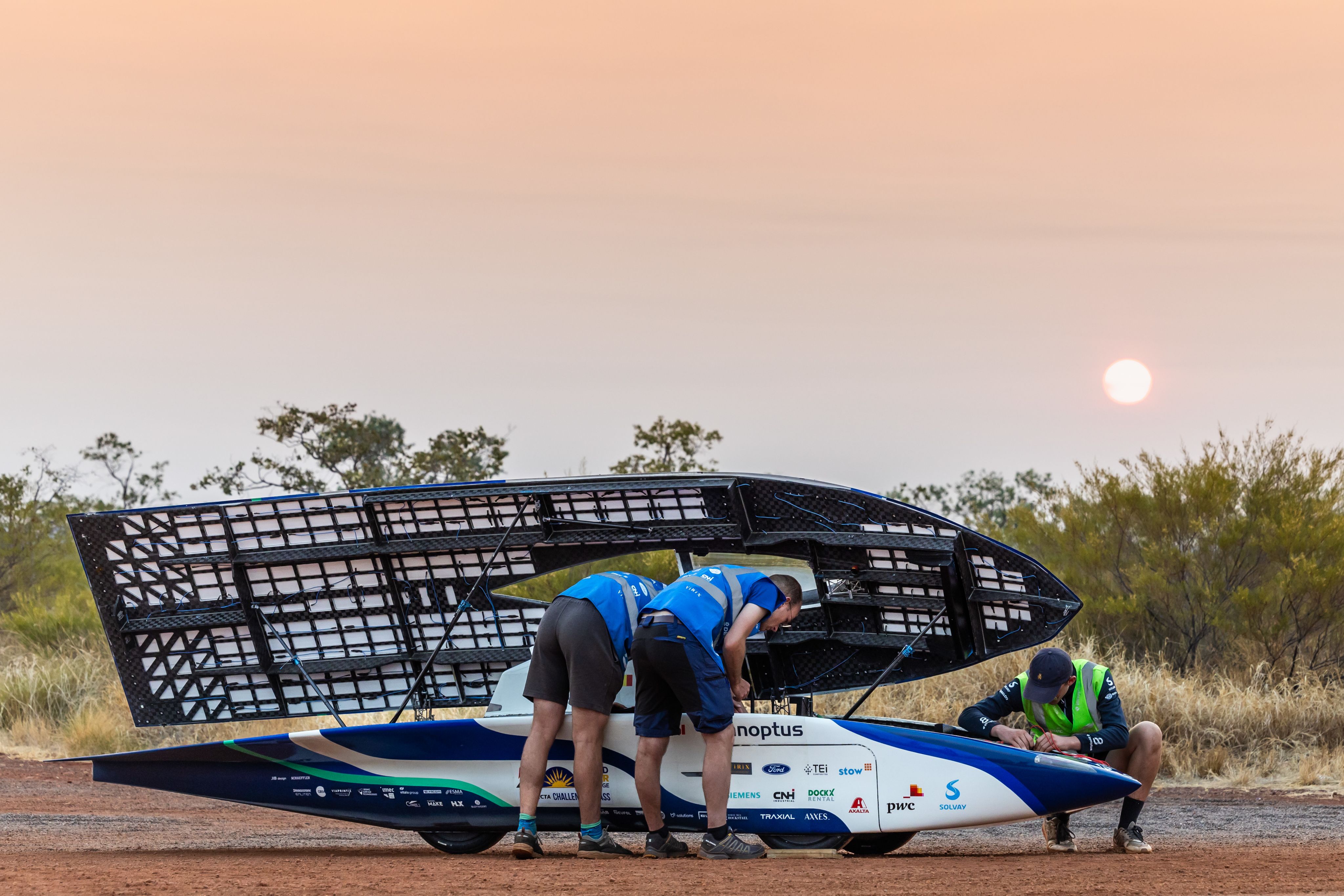
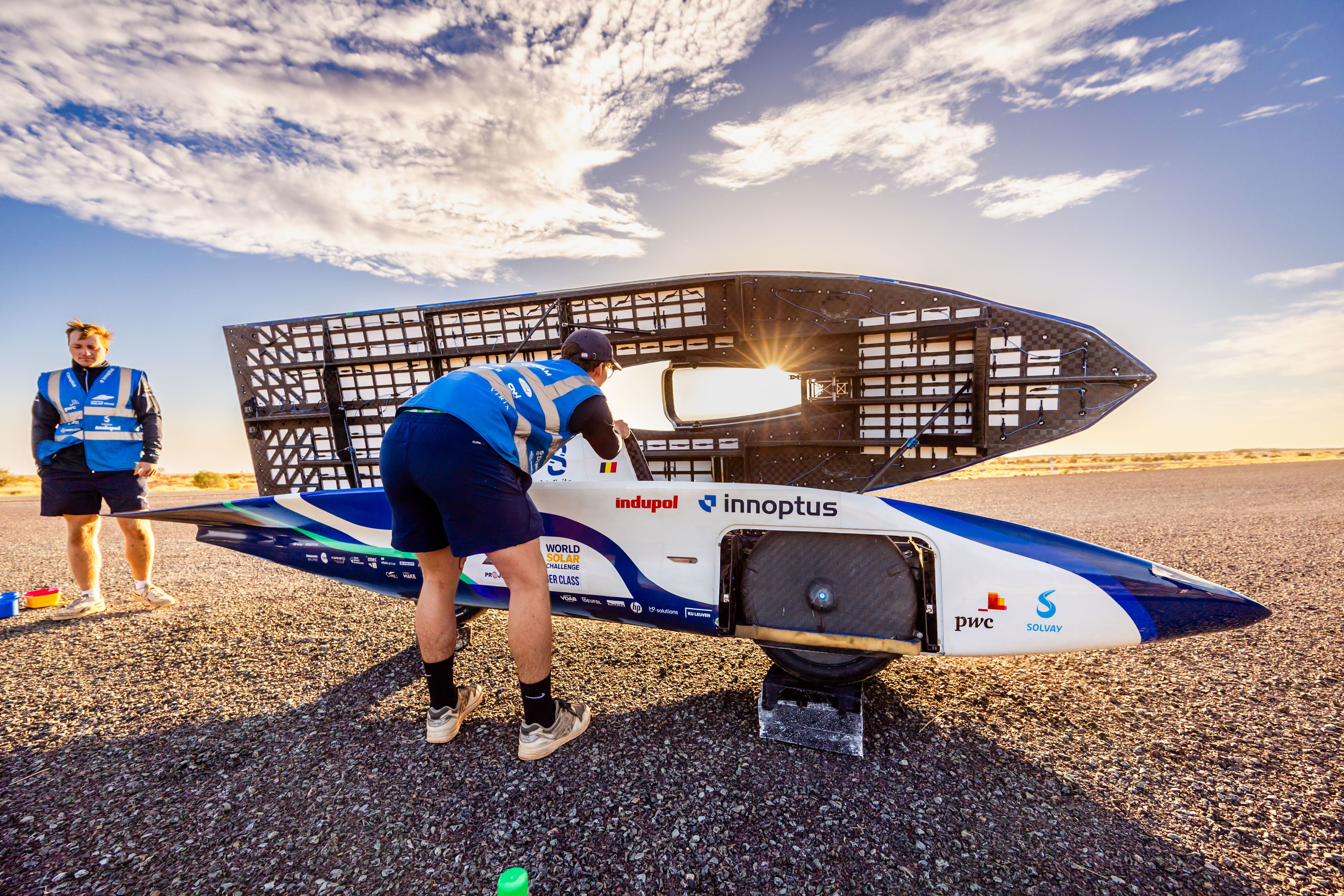
CHALLENGES
ALONG
THE WAY

Although the team went on to win the race, it wasn’t smooth running all the way!
They had to deal with some pretty major bushfires. These fires made visibility poor, but not only that, at times, the smoke became so unexpectedly thick that there was a big drop in incoming power because the smoke blocked out the sunlight. And as you can imagine, for a solar car, this was a serious problem!
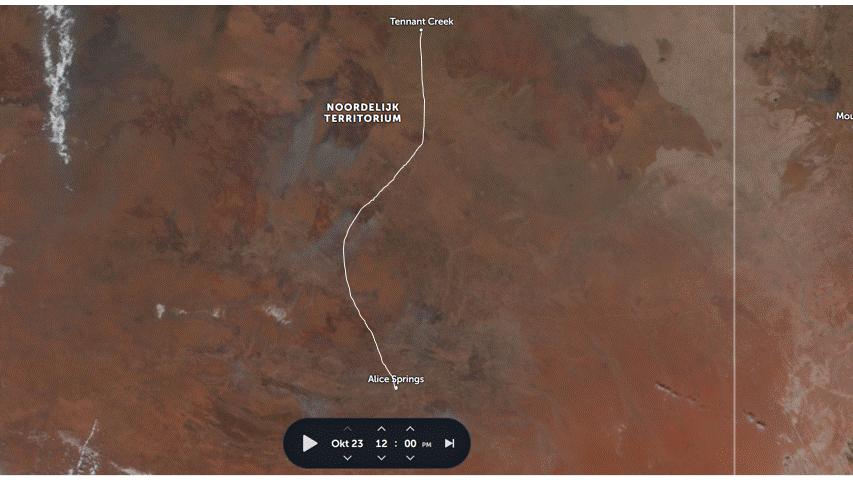
Simon De Baere, Race Strategist Engineer: “During the race we experienced that it is more useful to track the smoke clouds via satellite imagery than the fires themselves. Here above you can see the smoke cloud quickly covering the part of the route we drove.”
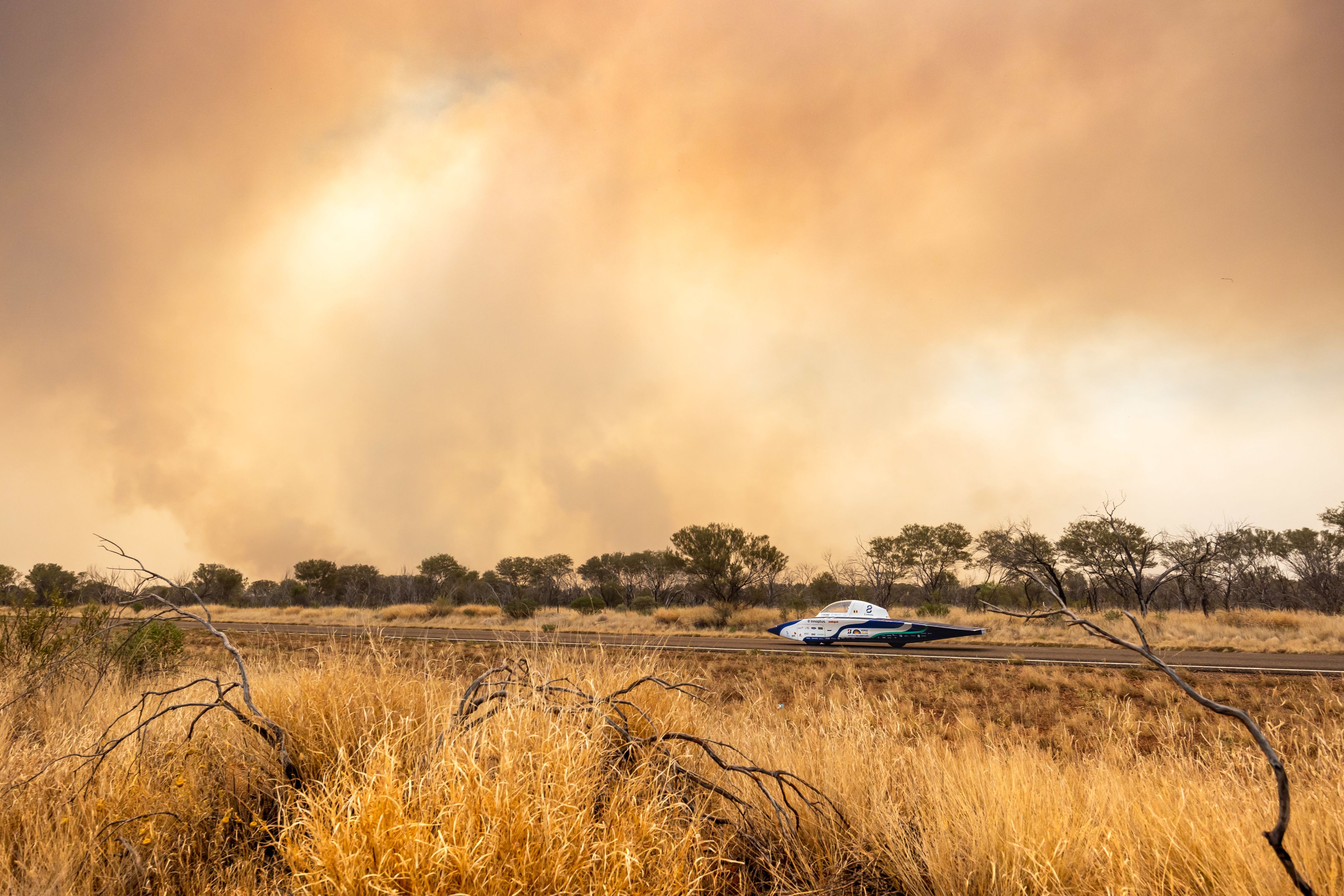
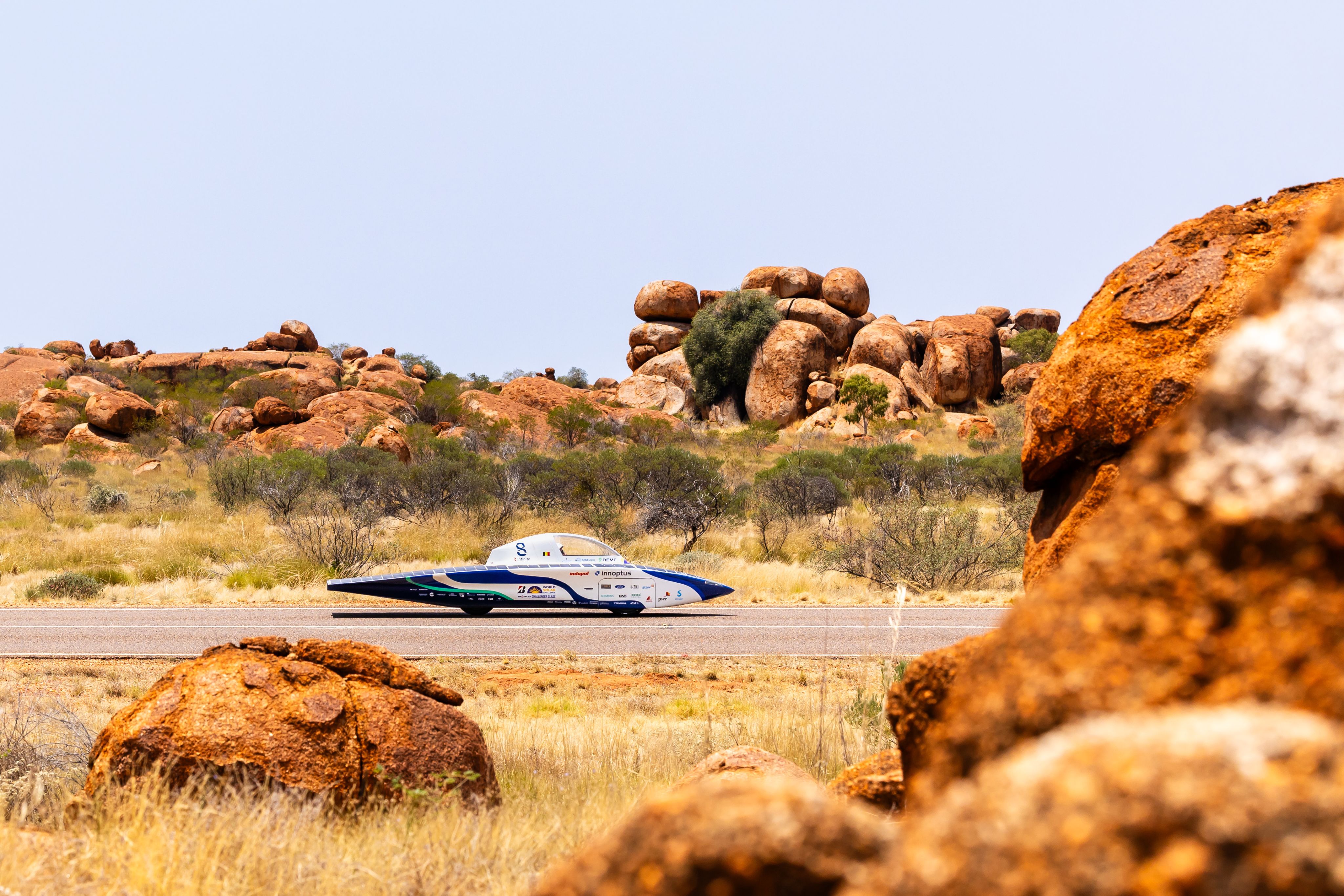
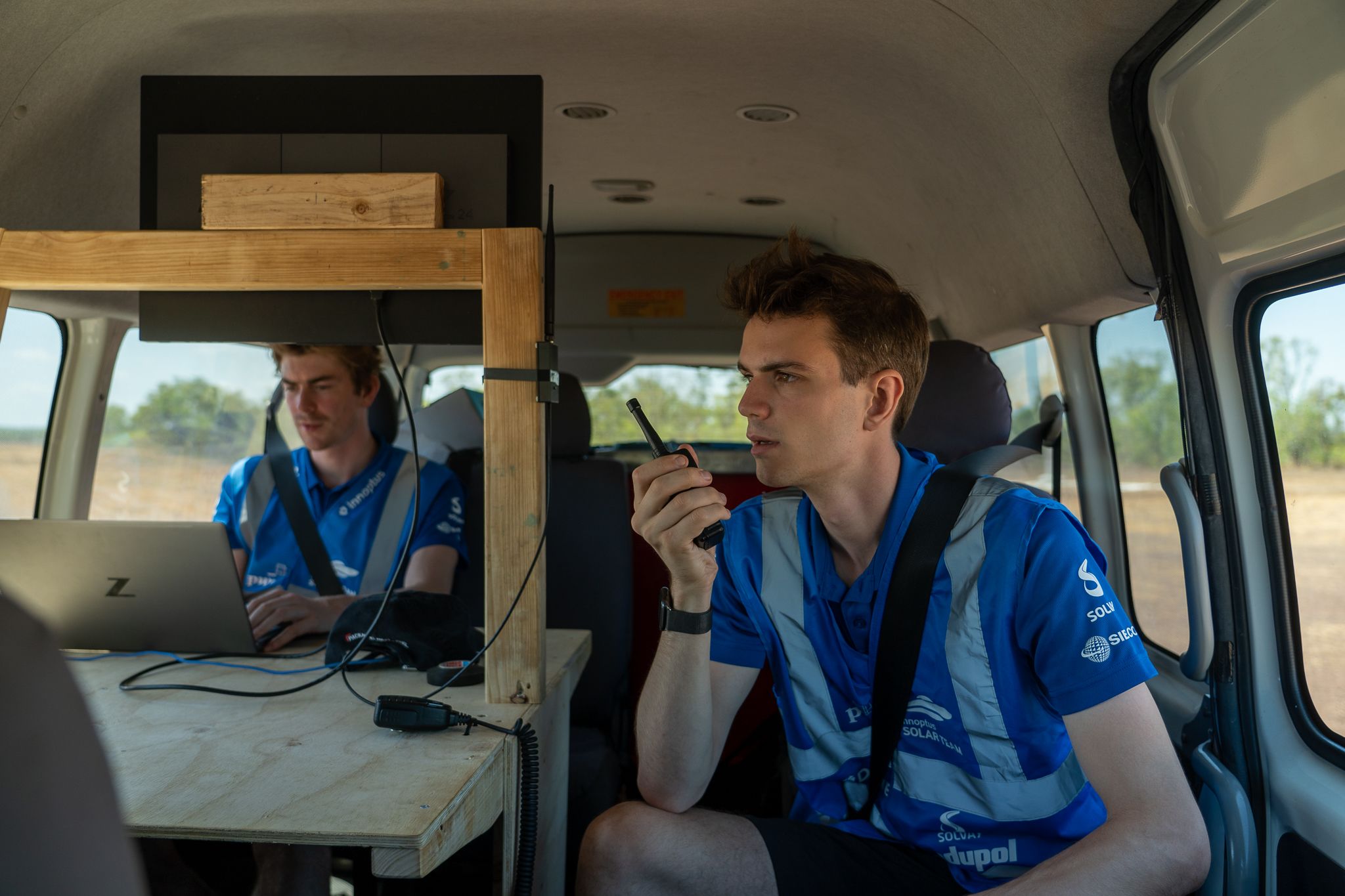
CONNECTIVITY
SAVED
THE DAY


From accessing live satellite imagery, to using different kinds of satellites for a range of functions including both voice and data connectivity, as well as Earth observation, satellite connectivity played a critical role in helping the Innoptus Solar Team overcome many of the problems it encountered along the route.

Simon De Baere, Race Strategist Engineer: “Thanks to the satellite internet connection we could track the [smoke] clouds. We got a new picture every 15 minutes approximately… so we could anticipate how clouds would move and how the smoke would impact our race strategy.”
WATCH THE TEAM'S FULL RACE ADVENTURE
The 2023 Solar Challenge win is a great illustration of the Power of Partnerships!


A look forward September 2024
The Innoptus Solar Team is already preparing for the next race which will be in South Africa. This will bring some different challenges, such as navigating traffic congestion in densely populated areas, and precisely timing the point when the car reaches set checkpoints. Strategy will be critical, and connectivity and data will play an integral part of strategizing.